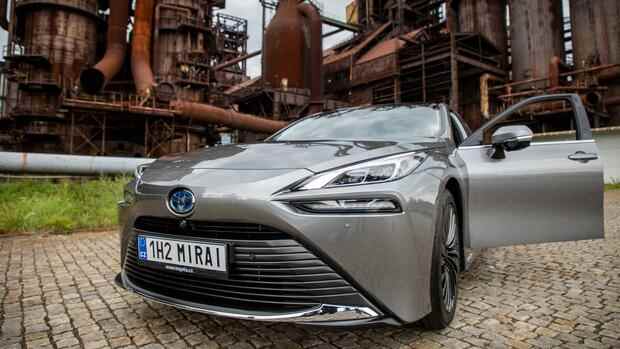The Japanese were the largest automaker in the world in 2021.
(Photo: imago images/CTK Photo)
Tokyo The global lack of chips in the auto industry has not yet been able to stop Toyota, the world’s largest automaker, from chasing records. In the first nine months of its fiscal year, which ended in March, the VW rival posted the highest profit in the company’s history at 2.3 trillion yen (17.6 billion euros).
Toyota also had to drastically reduce its production because the manufacturer lacked computer chips. The group must therefore lower its sales forecast for the full year by 500,000 to 8.5 million cars. But exchange rate effects and, above all, higher prices drove profits by 58 percent over the previous year’s level.
Toyota’s net profit margin rose to ten percent, the operating profit margin even to 10.9 percent – a high value for a volume manufacturer. Toyota is also sticking to its profit forecast for the full year, but still expects lower sales and sales.
>>Read here: Chip crisis handled better than VW: Toyota remains the largest car seller ahead of Volkswagen
Top jobs of the day
Find the best jobs now and
be notified by email.
Rising prices are also boosting profits for Toyota’s competitors Nissan and Honda. The Renault partner Nissan reported its return to profitability on Tuesday after a long crisis and raised its profit forecast for the full financial year. Honda followed on Wednesday afternoon.
Nissan is back on track for growth
Investors are particularly impressed by Nissan: After the group had increased its profit forecast for the full year by 14 percent on Tuesday to 205 billion yen (around 1.55 billion euros), the share price shot up 5.7 percent on Wednesday to 626.6 yen up. The group suffers more from the lack of chips than Toyota.
With a profit margin of 2.4 percent, Nissan remains Japan’s least profitable automaker. But Nissan also benefits from the same effects as its big competitor Toyota, Vice President Ashwani Gupta makes clear: On the one hand, the cheap yen makes exports cheaper and increases profits in the USA when converted into yen. On the other hand, the profit margin for each car sold increases because demand is currently higher than supply.
In North America, Nissan can present better numbers again. Low margins and falling sales had recently deepened Nissan’s crisis there. In the past quarter, sales there fell again by one percent, but the Japanese developed significantly better than the market, which collapsed by 21 percent. With new models and fewer discounts, Nissan has managed to stop the downward trend.
When it comes to electric cars, the Japanese want to work more closely with the alliance partners Renault and Mitsubishi. A month ago, the three brands announced that they would jointly invest 23 billion euros in an electric car and battery offensive by 2030. For Gupta, this is a sign of change.
The main goal is currently to ramp up production quickly. “Our problem is not how much we want to sell. Our problem is how much we can produce,” Nissan’s chief operating officer said Tuesday. “We are already in the growth phase.”
Honda raises earnings guidance significantly
Traditionally, Honda only presents its balance sheet after the market closes. But the content was positive this time: Honda lowered its sales forecast for 2022. But the group increased its outlook for operating profit significantly – and now expects an increase of 21 percent for the full year.
Honda is now expecting an operating profit of 800 billion yen (around 6.1 billion euros) for the financial year ending in March. This would increase the operating profit margin to at least 5.5 percent. Money that Honda can use to finance its electric car offensive. However, Honda warns that the situation will remain challenging due to the pandemic, the lack of important components such as chips and further rising commodity prices. Honda plans to sell 4.2 million vehicles in the current financial year – the company had delivered 4.5 million in the previous twelve months.
The group had recently concluded a development alliance for electric cars with the US manufacturer General Motors (GM). For the group, which in the past often went its own way, especially in development, this is a change. Even the big competitor Toyota has recently entered into alliances in this area in order to share the high costs for the development of new electric platforms.
More: Toyota increases the pace of electric cars – and relies on a superior battery
